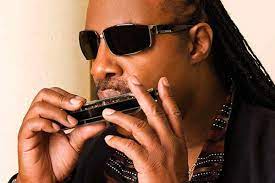The harmonica, sometimes known as a French harp or mouth organ, is indeed a free-reed wind instrument popular in blues, American folk music, classical music, jazz, country, and rock, among other genres. Diatonic, chromatic, tremolo, octave, orchestral, and bass harmonicas are among the various varieties available. The mouth (lips and tongue) is used to move air into and out of one (or more) holes across a mouthpiece when playing the harmonica. A chamber with at least one reed is hidden behind each hole. The diatonic Richter-tuned blues harp, with 10 air passages and twenty reeds, is by far the most prevalent.
A reed for a harmonica is indeed a flat, extended spring made of brass, stainless steel, or bronze that’s also fastened place at a single end over an airway slit. When the player’s air causes the free end to vibrate, it simultaneously restricts as well as unblocks the airway, producing sound.
Individual frequencies are tuned into reeds. Tuning a reed may entail adjusting its length, weight at its free end, or the stiffness near its fixed end. Shorter, lighter, and stiffer reeds generate higher-pitched notes, whereas longer, heavier, and springier reeds produce deeper lower sounds. When a reed is fastened above or below its slot rather than in the plane of the slot, as it is on most current harmonicas, it reacts more quickly to air passing through it.
Because of the difference in reaction to air direction, both a blow as well as a draw reed could be used in the same air chamber and played independently without the need of plastic or leather flaps (valves, wind-savers) to block the non-playing reed.
Bending, which involves making embouchure changes to cause a drop in pitch, is a key skill in performance. Bending isolated reeds is conceivable, like on chromatic and other harmonica models with wind-savers, but it is also possible to lower and raise the pitch generated by pairs of reeds in the same chamber (overbend, overblow, overdraw), as on a diatonic or other unvalved harmonicas.
The ordinarily quiet reed, the opening reed, produces sound during such two-reed pitch shifts (for instance, the blow reed while the player is drawing).
Many blues harmonica players have used microphones and tube amplifiers to amplify their instruments since the 1950s. Marion “Little Walter” Jacobs, who performed the harmonica beside a “Bullet” microphone intended to be used by radio cab dispatchers, was among the early pioneers of this method. This gave his harmonica a “punchy” midrange quality that was audible over an electric guitar.
Also Read: What is the name of the band group that have music on Indian Idol 2021?

